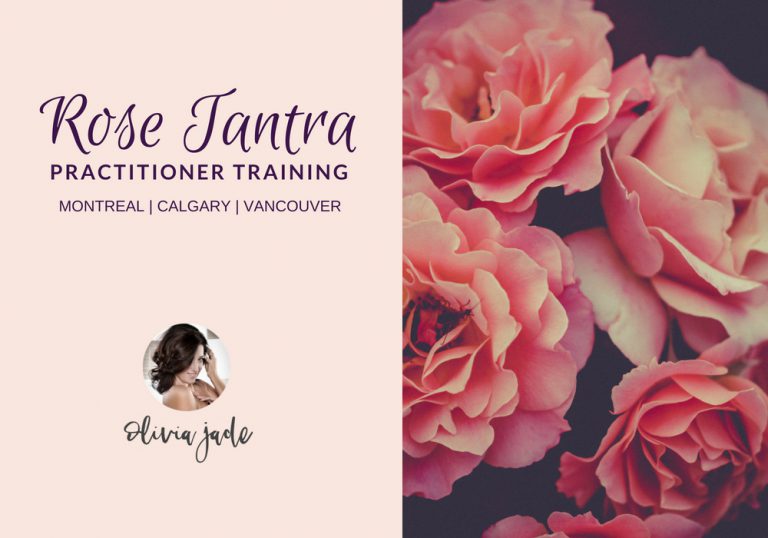Tantric Manifesto – you have a right to
This manifesto of rights is for anyone who seeks out any form of sexual healing, coaching, surrogacy, sexological bodywork, tantric healing, tantric massage, tantric training,…
This manifesto of rights is for anyone who seeks out any form of sexual healing, coaching, surrogacy, sexological bodywork, tantric healing, tantric massage, tantric training, or any other form of sexual or sensual healing, teaching, exploration, or relaxation based on hands-on, experiential, somatic work. This is a companion to How to Find a Tantric Healer.
Your rights:
- You have the option of a free consultation.
- You can expect the practitioner to have a clean, welcoming space for your session.
- You can verify the schools, teachers, mentors, and training your practitioner has worked with.
- You will receive clear guidance on cost or donation for each session.
- You are able to set your own boundaries.
- All boundaries will be named, and the scope of those boundaries will be comprehensive and clear.
- You can expect check-ins throughout the session.
- The boundaries will not be crossed or loosened during the session — not even if you want them to!
- You can add additional boundaries during a session.
- You can expect to know how long a session will last.
- You will have the option to set intentions for the session.
- Any lapse or violation of these rights should be met with honest and authentic recognition of responsibility.
Commentary
The free consultation: Sexual healing is powerful, profound, and intimate work. This is not equivalent to an ordinary massage. The wrong practitioner or the wrong experience can set back healing enormously, or add new impediments to your growth and healing. Accordingly, it is only sensible for you to have the opportunity to speak with your practitioner ahead of time, and to give yourself some time to process this connection. This may not be necessary for everyone (or for all intentions), but it should always be an option. If the practitioner does not give you this option, it should be considered a cause for concern. For more on how to get the most out of your consultation, please see How to Find a Tantric Healer.
Environment: A practitioner’s temple space should be clean and welcoming. This should reinforce the element of trust. You are trusting your physical, emotional, and energetic safety to your practitioner. The practitioner should demonstrate the worthiness of this trust by creating a safe and sacred container for your session. This is true whether the space is a room in the practitioner’s apartment, a dedicated healing or temple space, a spa, or a hotel room. Some practitioners will come to you, and most will make an effort to energetically clear a safe, sacred space in your own home or apartment.
Training: Training and certification are one of the least reliable guides to practitioner quality and capability. Nonetheless, a client should have the ability to verify any claims to training.
Finances: There should be no surprises. A session should always be energetically balanced, and the usual method for this is money. The client pays for a service, the practitioner offers it. If sessions are done in trade, that trade should also be an energetic balance. When the mode of payment or trade is unclear, you may be unpleasantly surprised to discover an ulterior motive during or after the session. Trust your intuition!
Setting your boundaries: Looking at the Bill of Rights as a whole, you can see the emphasis on boundaries. Clear, simple, unambiguous boundaries are an essential part of a healing experience. Every practitioner should give you the opportunity to set your boundaries, and be able to work creatively and effectively within those boundaries, no matter what they are. If your practitioner does not invite you to set boundaries at or before your first session, it should be a blinking, rotating red flag with a siren next to it. Once you have an established connection with a practitioner, the boundary setting may be implicit based on prior work, but you should always feel that you are in the driver’s seat, and could add or change boundaries at any time for any reason.
Named boundaries: The practitioner should have her or his own boundaries as well, and the combination of boundaries should be clearly named. Clear, concrete named boundaries are an essential beginning to your work with a practitioner.
The scope of boundaries: Anything at all can be set as a boundary. If you do not like the word “energy” you can request your practitioner not use that word. If you do not believe in past lives or if you find the word “divine” to be offensive, you can request that your practitioner find other ways to communicate. Maybe you do not want the practitioner to use oil… But there are some things that should always be clarified at the beginning of your work with a practitioner. Namely:
- The scope of touch. What touch do you expect? What touch are you not ready for? Are there any injuries or tender places that should be named?
- The intensity of touch. Some people have extreme sensitivity to light touch: it is unbearable. Others cannot abide intense touch.
- Clothing. Tantric healing sessions are typically offered from a clothed or partially clothed practitioner to an unclothed receiver. But not everyone begins tantric or sensual healing with intimate touch, and clothing can be an important and unambiguous expression of boundaries: In some schools, clothes come off for both practitioner and client to eliminate all artificiality and all barriers to contact. In others, the practitioner remains entirely clothed. More commonly, tantric practitioners will remove their top in order to bring heart-to-heart contact but leave on pants or underwear to clearly indicate that sexual union is not an option. While different practitioners may bring different approaches to this, your preferences must be honoured.
- Fluid safety. At the beginning of your work with a practitioner, there should be a conversation about fluid safety and any areas of concern you might have and any risks. The practitioner should be able to address your questions and concerns knowledgeably and with clarity.
- Gloves. There are different schools of thought when it comes to the use of gloves. Tantric practitioners will often use gloves for base work (internal anal touch) but will more often not use gloves for other intimate touch: gloves impede the ability to feel energy clearly, and they reduce or eliminate the texture that comes with the delicate use of fingertips. Even so, gloves should be worn if the skin of the hand is compromised. Many practitioners use the “lime” test: if lemon or lime juice causes any sting, there is some fluid safety concern. Even so: a careless practitioner who does not thoroughly wash hands between clients could theoretically spread disease from one client to another. In any case, all practitioners should have gloves available, and it should be an option available to you. (Note: gloves are required by sexological bodywork practitioners. If a sex-bod practitioner does not use gloves, that is a violation of their professional standards.)
- Environmental. Do you have preferences for music, lighting, scent, incense? A skilled practitioner should be able to accommodate your preferences and be prepared to work around any allergies you may have.
Check-ins: A competent practitioner will check in with you at key points of your session. Most particularly, there should be an added level of in-session authorization before intimate touch or penetration of any sort. The skilled practitioner will continuously monitor body language, facial expressions, breath, heart rate, energy — and offer occasional verbal check-ins — for indications that your enthusiastic consent is maintained. If your practitioner is not checking in with you along the way or is not demonstrating sensitivity to any jitters or apprehensions you are feeling, that is a serious concern.
Shifting boundaries: Quite obviously, the named boundaries should never be crossed by the practitioner. That would be a serious lapse in professionalism. Less obviously, the boundaries should never be shifted during a session. Even if you desperately want them to! The fact is, once the energy is flowing, and the jitters are calmed, you might make a very different decision about boundaries than when you first consider a session. But the state of relaxation coming from simple massage, not to mention sexual arousal, is not a state suitable for making important decisions. The standard practice is for the practitioner to hold the named boundaries throughout the session, and to graciously receive any requests for boundary loosening as a note for consideration toward subsequent sessions, and to revisit the boundaries for subsequent sessions at the appropriate time.
Adding restrictions: You, however, can add restrictions or boundaries at any time for any reason. This may be practical: “Oh, I forgot to tell you I have a torn muscle there, please go lightly!” And it may be based on intuition or feeling: “Actually, I don’t think I’m ready for intimate touch today after all.” This may or may not diminish the effectiveness of the session depending on intentions, but it is always your option, and the practitioner must respect such tightening of the boundaries without hesitation.
Duration: This is another boundary… the boundary of time! And, like all boundaries, you should expect the practitioner to hold this boundary for you. Some practitioners have fees that are specifically about duration, so this is a way of ensuring that the practitioner is holding your intentions around financial as well as physical and emotional safety. But regardless of the financial model, it is professional to expect that a session is a predictable length. There are some clarifications to this: first, you can always shorten or end the session — just as with other boundaries, you can add more restrictions at any time for any reason! Secondly, there can be very intense experiences that require more after-care and grounding than normally planned for, and some shamanic sessions can go into very intense places that do not conform to our expectations about session duration. When the practitioner needs to hold open additional time, it should be entirely and purely for your safety. Otherwise, the sessions should fit the time allocated.
Intentions: Just as each session begins with the setting of boundaries, so there should be a conversation about intentions. When you work with a tantric practitioner, you are putting yourselves in the hands of a trained and experienced guide who knows the territory well. That said, you are in charge of the destination. It should always be clear that you are in charge of your own growth and healing, and the practitioner is there to serve your intentions. As the client, you certainly have the option of setting an intention along the lines of “Show me what this tantra thing is all about,” and abdicating all direction to the practitioner, but the practitioner should always give the client the right to set intentions.
Violations: We are all human, and even the very best practitioners will sometimes suffer a lack of presence, a failure of memory, or otherwise make a mistake that violates their own best intentions for their work. Accidents happen. This does not indicate the practitioner is incompetent or inherently unethical. It is, however, absolutely crucial for the practitioner to own up to the mistake, and offer a sincere and unqualified apology. The practitioner should be prepared to make amends if that is relevant. As a client, if at any time you feel that the practitioner is not absolutely transparent — especially about a mistake — this is a serious problem. The “bad road” here leads to gas-lighting, manipulation, and destructive dishonesty. The “good road” leads to a deeper connection, growth for all parties, and authentic, profound healing.
Finally, with regard to violations, especially those that are not met with satisfactory correction, tantra has no governing body. There is no regulatory mechanism. There is no public or private recourse other than the law, which is generally unfriendly to this line of work in the first place. Historically, this has meant that perpetrators and other bad-actors have been able to continue to commit violations without consequence. One day, we may see a process whereby praise, gratitude, concerns, and violations can be made public in a fair and open manner.





